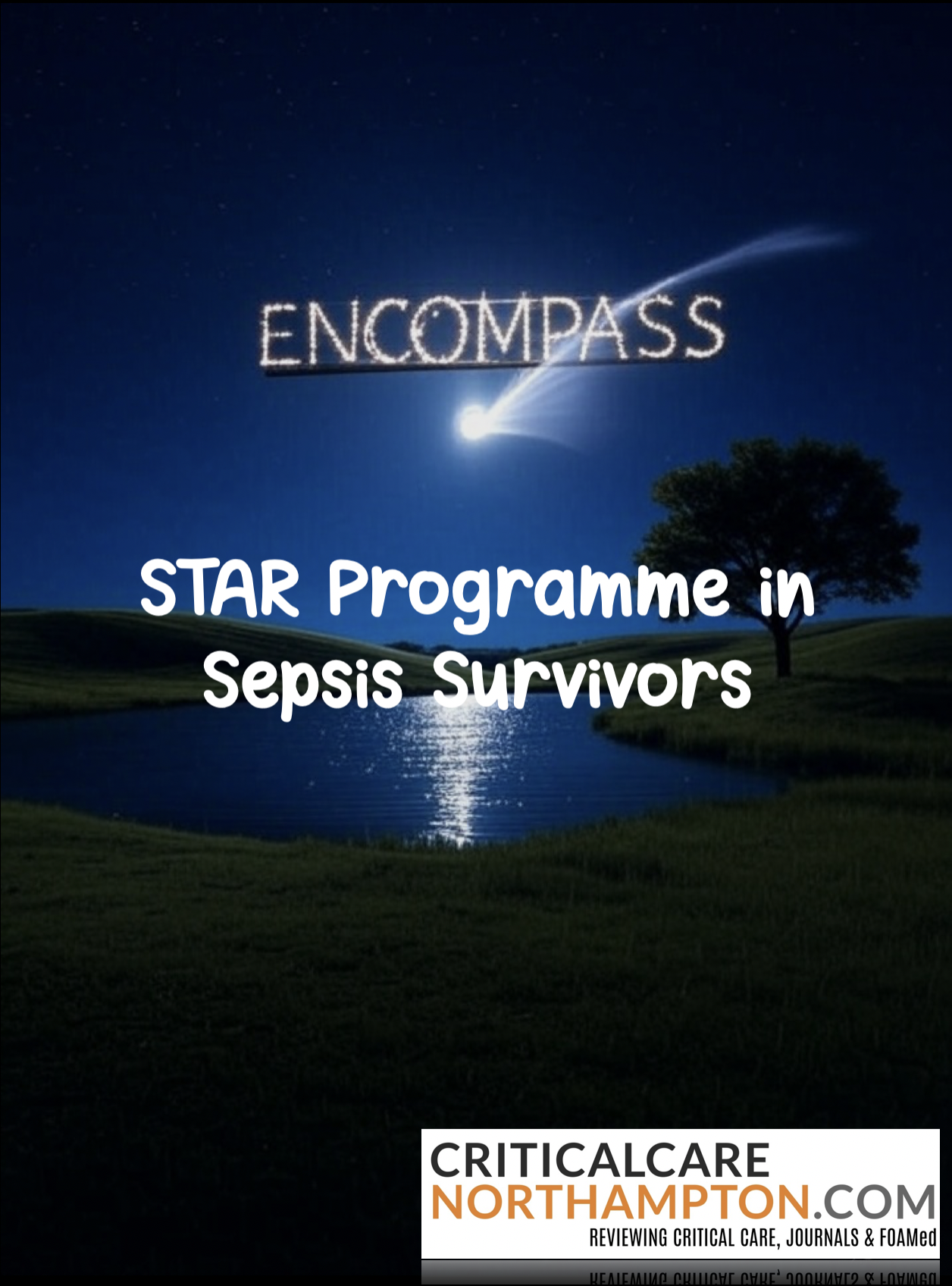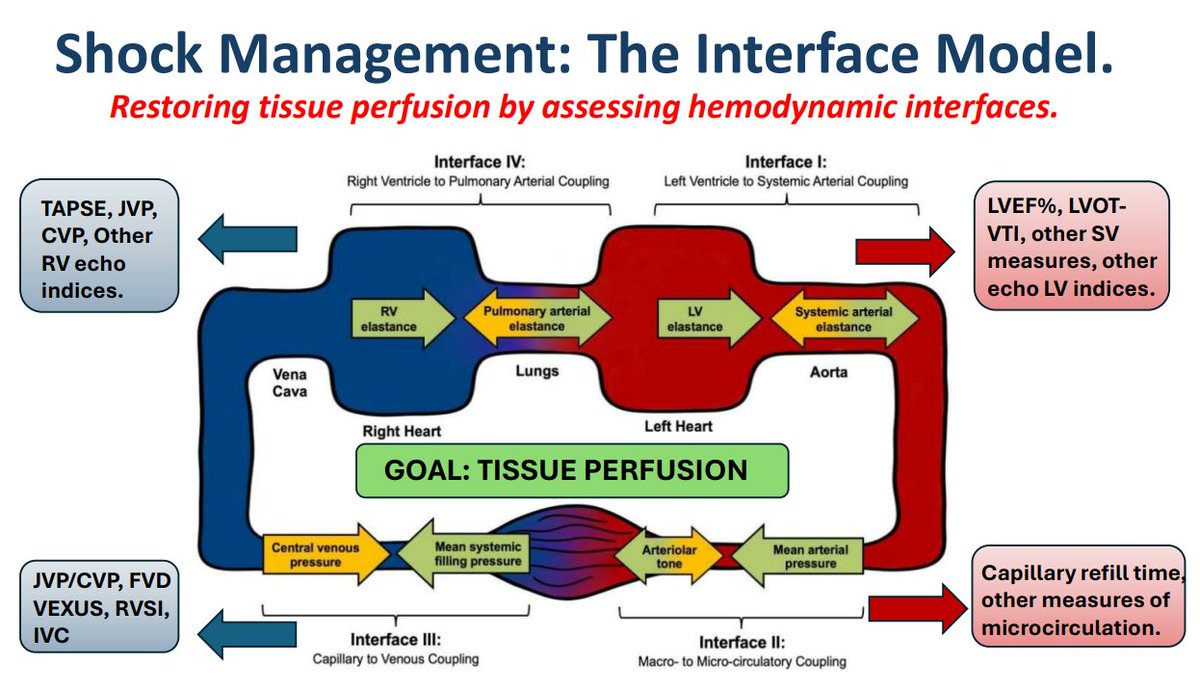What was it?
A multicenter, two-arm, pragmatic, stepped-wedge cluster randomized controlled trial (ENCOMPASS) evaluating the Sepsis Transition and Recovery (STAR) program, a navigator-led, telehealth-based intervention, versus usual care, to improve outcomes for sepsis survivors post-hospital discharge. Conducted across eight hospitals in North Carolina, the study used a hybrid type I effectiveness-implementation design to assess clinical outcomes and implementation factors concurrently.
The Devil in the Details!
- 2,150 patients enrolled across 8 hospitals in North Carolina, randomized by cluster (hospital).
- Intervention: STAR program, involving nurse navigators coordinating evidence-based post-sepsis care (e.g., medication reconciliation, infection monitoring, follow-up coordination) via telehealth, compared to usual care.
- Adult patients hospitalized with sepsis, identified per Sepsis-3 criteria.
- Primary outcome: Composite of 30-day mortality and hospital readmission.
- Secondary outcomes: Mortality, readmission rates, hospital-free days, implementation barriers, and facilitators (assessed via qualitative data).
- Trial duration: 36 months, with hospitals transitioning from usual care to STAR every 4 months in a randomized sequence.
The Results!
- Primary outcome: STAR reduced the composite endpoint of 30-day mortality and readmission by 2.5% (33.5% in STAR vs. 35.9% in usual care, p=0.04). Notably, mortality was 3.2% lower in the STAR group, though readmissions were slightly higher (not statistically significant).
- Secondary outcomes: STAR patients had more hospital-free days (mean difference 1.2 days, [CI 0.3, 2.1], p=0.01). Qualitative data highlighted implementation facilitators (e.g., strong leadership support) and barriers (e.g., resource constraints).
- Safety profile: No significant adverse events directly attributed to the intervention were reported, though telehealth reliance posed challenges for some patients.
They concluded
The authors concluded that the STAR program, compared to usual care, was associated with a modest reduction in the combined endpoint of 30-day mortality and readmission, driven primarily by lower mortality, and increased hospital-free days among sepsis survivors. The hybrid design provided insights into implementation strategies for broader adoption.
Gripe Point Summary!
Detailed gripes below, but key concerns include:
- Stepped-wedge design introduces potential temporal bias.
- Composite primary outcome obscures individual effects of mortality and readmission.
- Limited generalizability due to regional focus (North Carolina hospitals).
- Telehealth intervention may exclude patients with limited technology access.
- Lack of long-term outcome data beyond 30 days.
- Cluster randomization reduces statistical power compared to individual randomization.
- Implementation data qualitative, lacking quantitative metrics for scalability.
- Potential confounding from variations in usual care across hospitals.
Our Summary
In sepsis survivors, the STAR program reduced 30-day mortality and readmissions by 2.5% and increased hospital-free days compared to usual care, with no major safety concerns. This hybrid trial suggests the potential of navigator-led telehealth interventions to improve post-sepsis outcomes, but larger, more diverse studies are needed to confirm findings and address implementation challenges.
Who’s worked on this before?
Further gripes
- Stepped-wedge design: While pragmatic, the design introduces potential bias from temporal trends in sepsis care (e.g., improving protocols over time), which could inflate STAR’s apparent effect.
- Composite outcome: Combining mortality and readmission risks masking differential effects; the mortality benefit (3.2%) was clearer than the readmission signal, which was not significant. This complicates interpretation of STAR’s true impact.
- Generalizability: Conducted in a single state (North Carolina), the trial may not reflect diverse healthcare systems or patient populations elsewhere, particularly in areas with different telehealth access or sepsis care standards.
- Telehealth barriers: Reliance on telehealth may exclude patients with limited technology access or digital literacy, potentially introducing selection bias or inequity in care delivery.
- Short-term focus: Outcomes were assessed at 30 days, missing longer-term effects on morbidity, functional recovery, or quality of life, which are critical for sepsis survivors.
- Cluster randomization: While practical for hospital-level interventions, this approach reduces statistical power compared to individual randomization, potentially underestimating effect sizes or missing subgroup differences.
- Usual care variability: Usual care was not standardized across sites, introducing potential confounding from differences in baseline post-sepsis care practices.
- Implementation data: Qualitative insights on barriers and facilitators are valuable but lack quantitative metrics (e.g., cost-effectiveness, scalability scores), limiting practical guidance for broader adoption.
- Sample size and power: Although 2,150 patients were enrolled, the cluster design and modest effect size raise concerns about whether the study was adequately powered for all secondary outcomes, particularly readmission rates.
- Patient engagement: The trial did not report patient or caregiver perspectives on the STAR program’s acceptability, which could influence real-world uptake.
CCN’s Reflection
The ENCOMPASS trial offers promising evidence for the STAR program as a scalable, telehealth-driven approach to improve sepsis survivorship, with a modest but significant reduction in 30-day mortality and readmissions. Its pragmatic, stepped-wedge design and hybrid focus on implementation are strengths, aligning with real-world healthcare delivery. However, the regional scope, short-term outcomes, and potential biases from the study design temper enthusiasm. The reliance on telehealth also raises equity concerns, as not all patients may have access to or comfort with digital platforms. This trial is a solid step toward structured post-sepsis care, but we need broader, longer-term studies to confirm its impact and ensure it works for diverse populations. Keep an eye out for how STAR evolves in future implementations
Written by JW










